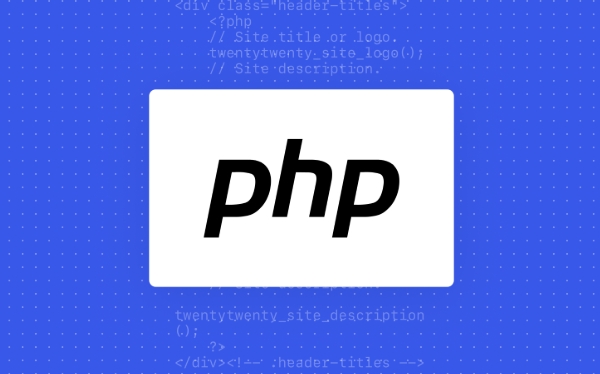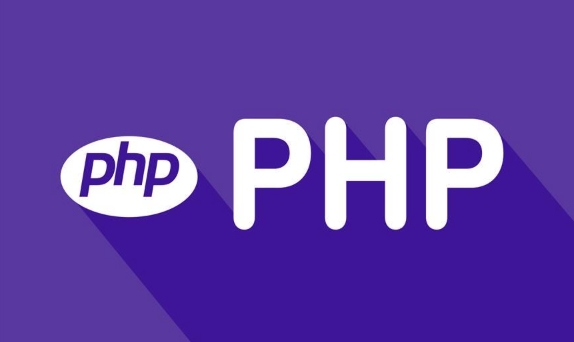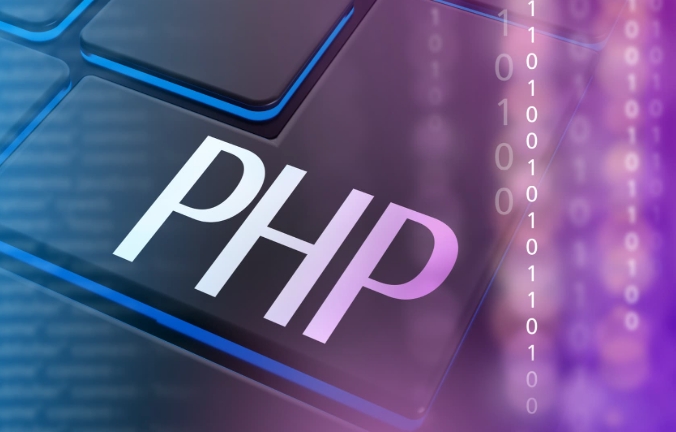PHP local development environment setup: The easiest way
Jun 26, 2025 am 01:12 AMTo set up a local PHP development environment quickly, use XAMPP for simplicity. 1. Download and install XAMPP for your OS. 2. Start Apache and MySQL via the XAMPP Control Panel. 3. Place PHP files in the htdocs folder to access them at http://localhost/your-folder-name. 4. For macOS, consider MAMP; for Linux, XAMPP or LAMP are options. 5. Create a basic PHP project by adding an index.php file with simple PHP code. 6. Check the PHP version and consider Laragon or Docker if specific versions are needed. 7. Optionally use Docker for flexibility by installing Docker Desktop, using pre-built images, and defining services in docker-compose.yml. 8. Enable error reporting in php.ini, use var_dump() for debugging, and monitor log files during testing.

Setting up a local PHP development environment doesn’t have to be complicated. If you're just trying to get a basic setup running quickly — maybe for WordPress, Laravel, or a simple PHP project — there's a straightforward way that avoids unnecessary headaches.

Here’s how to do it the easy way.

Use XAMPP (or similar all-in-one package)
XAMPP is one of the simplest tools for setting up a full PHP development stack locally. It includes Apache, MySQL, PHP, and phpMyAdmin — everything you need to run most PHP applications without having to install each component separately.
- Download and install: Go to the XAMPP website, download the version for your OS, and follow the installer steps.
- Start the services: Open the XAMPP Control Panel, start Apache and MySQL.
-
Your files go in
htdocs: Place your PHP files inside thehtdocsfolder (found in the XAMPP installation directory), and they’ll be accessible viahttp://localhost/your-folder-name.
If you're on macOS, MAMP works similarly and might feel more native. For Linux users, XAMPP still works well, or you can look into LAMP setups if you're comfortable with the terminal.

Set up a basic PHP project
Once you’ve got XAMPP (or another tool) running, creating a basic PHP site is simple:
- Create a new folder in
htdocs, likemyproject. - Inside it, create a file called
index.php. - Add some basic PHP code:
<?php echo "Hello, PHP!"; ?>
- Visit
http://localhost/myprojectin your browser.
That’s all it takes to see PHP working locally. You can expand from here by adding databases, frameworks, or CMS platforms like WordPress.
Make sure to check the PHP version included with your package. If you need a specific version for your project, you may want to use something like Laragon or Docker instead.
Use Docker for more flexibility (optional but handy)
If you want to simulate production environments more closely or need multiple PHP versions/configurations, Docker is a great option — and easier than many think.
- Install Docker Desktop (for Windows or macOS).
- Use pre-built images like Official PHP image or stacks like Laravel Sail if you're using Laravel.
- Define your services in a
docker-compose.ymlfile and rundocker-compose up.
This method gives you isolation between projects and avoids conflicts, especially when working with different PHP extensions or versions.
Don't forget to test and debug
Once your server is running, make sure to:
- Enable error reporting in PHP by editing
php.iniand settingdisplay_errors = On. - Use
var_dump()orprint_r()during development to inspect variables. - Keep an eye on log files — Apache and PHP logs are usually found in the
logssubdirectory of your XAMPP or Docker setup.
These little checks save time when things don’t work right away.
That’s basically it. Whether you go with XAMPP for simplicity or Docker for flexibility, getting a local PHP dev environment up and running doesn’t have to be hard. Just pick the tool that fits your needs and start building.
The above is the detailed content of PHP local development environment setup: The easiest way. For more information, please follow other related articles on the PHP Chinese website!

Hot AI Tools

Undress AI Tool
Undress images for free

Undresser.AI Undress
AI-powered app for creating realistic nude photos

AI Clothes Remover
Online AI tool for removing clothes from photos.

Clothoff.io
AI clothes remover

Video Face Swap
Swap faces in any video effortlessly with our completely free AI face swap tool!

Hot Article

Hot Tools

Notepad++7.3.1
Easy-to-use and free code editor

SublimeText3 Chinese version
Chinese version, very easy to use

Zend Studio 13.0.1
Powerful PHP integrated development environment

Dreamweaver CS6
Visual web development tools

SublimeText3 Mac version
God-level code editing software (SublimeText3)
 PHP calls AI intelligent voice assistant PHP voice interaction system construction
Jul 25, 2025 pm 08:45 PM
PHP calls AI intelligent voice assistant PHP voice interaction system construction
Jul 25, 2025 pm 08:45 PM
User voice input is captured and sent to the PHP backend through the MediaRecorder API of the front-end JavaScript; 2. PHP saves the audio as a temporary file and calls STTAPI (such as Google or Baidu voice recognition) to convert it into text; 3. PHP sends the text to an AI service (such as OpenAIGPT) to obtain intelligent reply; 4. PHP then calls TTSAPI (such as Baidu or Google voice synthesis) to convert the reply to a voice file; 5. PHP streams the voice file back to the front-end to play, completing interaction. The entire process is dominated by PHP to ensure seamless connection between all links.
 How to use PHP to build social sharing functions PHP sharing interface integration practice
Jul 25, 2025 pm 08:51 PM
How to use PHP to build social sharing functions PHP sharing interface integration practice
Jul 25, 2025 pm 08:51 PM
The core method of building social sharing functions in PHP is to dynamically generate sharing links that meet the requirements of each platform. 1. First get the current page or specified URL and article information; 2. Use urlencode to encode the parameters; 3. Splice and generate sharing links according to the protocols of each platform; 4. Display links on the front end for users to click and share; 5. Dynamically generate OG tags on the page to optimize sharing content display; 6. Be sure to escape user input to prevent XSS attacks. This method does not require complex authentication, has low maintenance costs, and is suitable for most content sharing needs.
 How to use PHP combined with AI to achieve text error correction PHP syntax detection and optimization
Jul 25, 2025 pm 08:57 PM
How to use PHP combined with AI to achieve text error correction PHP syntax detection and optimization
Jul 25, 2025 pm 08:57 PM
To realize text error correction and syntax optimization with AI, you need to follow the following steps: 1. Select a suitable AI model or API, such as Baidu, Tencent API or open source NLP library; 2. Call the API through PHP's curl or Guzzle and process the return results; 3. Display error correction information in the application and allow users to choose whether to adopt it; 4. Use php-l and PHP_CodeSniffer for syntax detection and code optimization; 5. Continuously collect feedback and update the model or rules to improve the effect. When choosing AIAPI, focus on evaluating accuracy, response speed, price and support for PHP. Code optimization should follow PSR specifications, use cache reasonably, avoid circular queries, review code regularly, and use X
 PHP creates a blog comment system to monetize PHP comment review and anti-brush strategy
Jul 25, 2025 pm 08:27 PM
PHP creates a blog comment system to monetize PHP comment review and anti-brush strategy
Jul 25, 2025 pm 08:27 PM
1. Maximizing the commercial value of the comment system requires combining native advertising precise delivery, user paid value-added services (such as uploading pictures, top-up comments), influence incentive mechanism based on comment quality, and compliance anonymous data insight monetization; 2. The audit strategy should adopt a combination of pre-audit dynamic keyword filtering and user reporting mechanisms, supplemented by comment quality rating to achieve content hierarchical exposure; 3. Anti-brushing requires the construction of multi-layer defense: reCAPTCHAv3 sensorless verification, Honeypot honeypot field recognition robot, IP and timestamp frequency limit prevents watering, and content pattern recognition marks suspicious comments, and continuously iterate to deal with attacks.
 How to use PHP to combine AI to generate image. PHP automatically generates art works
Jul 25, 2025 pm 07:21 PM
How to use PHP to combine AI to generate image. PHP automatically generates art works
Jul 25, 2025 pm 07:21 PM
PHP does not directly perform AI image processing, but integrates through APIs, because it is good at web development rather than computing-intensive tasks. API integration can achieve professional division of labor, reduce costs, and improve efficiency; 2. Integrating key technologies include using Guzzle or cURL to send HTTP requests, JSON data encoding and decoding, API key security authentication, asynchronous queue processing time-consuming tasks, robust error handling and retry mechanism, image storage and display; 3. Common challenges include API cost out of control, uncontrollable generation results, poor user experience, security risks and difficult data management. The response strategies are setting user quotas and caches, providing propt guidance and multi-picture selection, asynchronous notifications and progress prompts, key environment variable storage and content audit, and cloud storage.
 PHP realizes commodity inventory management and monetization PHP inventory synchronization and alarm mechanism
Jul 25, 2025 pm 08:30 PM
PHP realizes commodity inventory management and monetization PHP inventory synchronization and alarm mechanism
Jul 25, 2025 pm 08:30 PM
PHP ensures inventory deduction atomicity through database transactions and FORUPDATE row locks to prevent high concurrent overselling; 2. Multi-platform inventory consistency depends on centralized management and event-driven synchronization, combining API/Webhook notifications and message queues to ensure reliable data transmission; 3. The alarm mechanism should set low inventory, zero/negative inventory, unsalable sales, replenishment cycles and abnormal fluctuations strategies in different scenarios, and select DingTalk, SMS or Email Responsible Persons according to the urgency, and the alarm information must be complete and clear to achieve business adaptation and rapid response.
 Beyond the LAMP Stack: PHP's Role in Modern Enterprise Architecture
Jul 27, 2025 am 04:31 AM
Beyond the LAMP Stack: PHP's Role in Modern Enterprise Architecture
Jul 27, 2025 am 04:31 AM
PHPisstillrelevantinmodernenterpriseenvironments.1.ModernPHP(7.xand8.x)offersperformancegains,stricttyping,JITcompilation,andmodernsyntax,makingitsuitableforlarge-scaleapplications.2.PHPintegrateseffectivelyinhybridarchitectures,servingasanAPIgateway
 PHP integrated AI speech recognition and translator PHP meeting record automatic generation solution
Jul 25, 2025 pm 07:06 PM
PHP integrated AI speech recognition and translator PHP meeting record automatic generation solution
Jul 25, 2025 pm 07:06 PM
Select the appropriate AI voice recognition service and integrate PHPSDK; 2. Use PHP to call ffmpeg to convert recordings into API-required formats (such as wav); 3. Upload files to cloud storage and call API asynchronous recognition; 4. Analyze JSON results and organize text using NLP technology; 5. Generate Word or Markdown documents to complete the automation of meeting records. The entire process needs to ensure data encryption, access control and compliance to ensure privacy and security.






